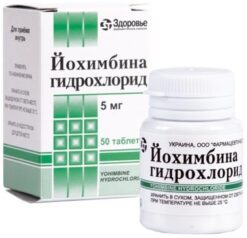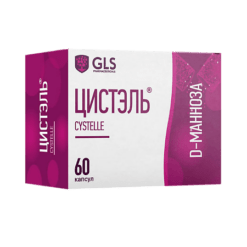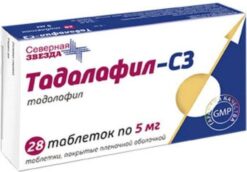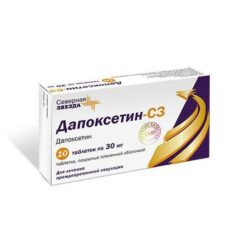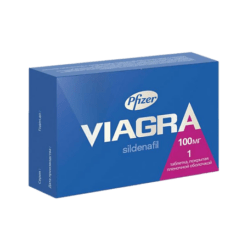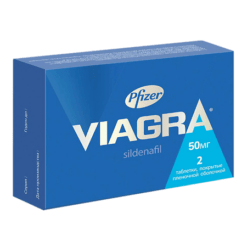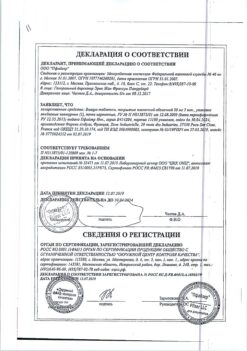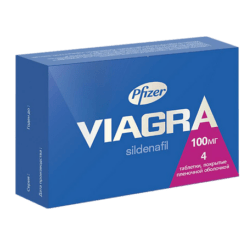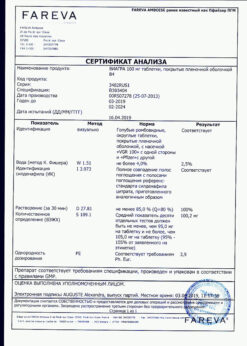No products in the cart.
Tamselin, 0.4 mg capsules 30 pcs
€1.00
Out of stock
(E-mail when Stock is available)
Description
Pharmacotherapeutic group: alpha 1-adrenoblocker
ATC code: G04CA02
Pharmacodynamics:
Selectively and competitively blocks postsynaptic alpha 1a-adrenoreceptors located in the smooth muscle of the prostate bladder neck and the prostatic part of the urethra. Decreases the tone of the smooth muscle of the prostate bladder neck and the prostatic part of the urethra, improving the outflow of urine. Simultaneously the symptoms of obstruction and irritation of the urinary tract associated with benign prostatic hyperplasia are reduced.
Therapeutic effect occurs within 2 weeks after the start of treatment. Its tropism to alpha1a-adrenoreceptors in the urinary bladder is 20 times higher than its ability to interact with alpha 1b-adrenoreceptors in the vascular smooth muscle. Due to this high selectivity, it does not cause any clinically significant reduction in systemic blood pressure in patients with arterial hypertension as well as in patients with normal baseline blood pressure.
Pharmacokinetics:
The absorption is high (more than 90%). Maximum plasma concentration after a single oral administration of 04 mg is reached after 6 hours. Binding with plasma proteins is 94-99 %. The volume of distribution is insignificant – 02 l/kg.
It is slowly metabolized in the liver to form pharmacologically active metabolites. Most of it is present in blood unchanged. It is excreted by kidneys (4-9% unchanged). Half-life period is 10-12 hours.
Indications
Indications
Benign prostatic hyperplasia (treatment of dysuric disorders).
Pharmacological effect
Pharmacological effect
Pharmacotherapeutic group: alpha 1-adrenergic blocker
ATX code: G04CA02
Pharmacodynamics:
Selectively and competitively blocks postsynaptic alpha 1a-adrenergic receptors located in the smooth muscles of the prostate gland, the neck of the bladder and the prostatic part of the urethra. Reduces the tone of the smooth muscles of the prostate gland of the bladder neck and the prostatic part of the urethra, improving the outflow of urine. At the same time, the symptoms of obstruction and irritation of the urinary tract associated with benign prostatic hyperplasia are reduced.
The therapeutic effect occurs 2 weeks after the start of treatment. Tropism for alpha1a-adrenergic receptors located in the bladder is 20 times greater than its ability to interact with alpha 1b-adrenergic receptors located in vascular smooth muscles. Due to such high selectivity, it does not cause any clinically significant decrease in systemic blood pressure in both patients with arterial hypertension and in patients with normal initial blood pressure.
Pharmacokinetics:
Absorption is high (more than 90%). The maximum concentration in plasma after a single oral dose of 04 mg is achieved after 6 hours. Communication with plasma proteins is 94-99%. The volume of distribution is insignificant – 02 l/kg.
Slowly metabolized in the liver to form pharmacologically active metabolites. Most of it is present in the blood unchanged. Excreted by the kidneys (4-9% unchanged). The half-life is 10-12 hours.
Special instructions
Special instructions
As with the use of other α1-blockers, during treatment with tamsulosin, in some cases a decrease in blood pressure (BP) may be observed, which can sometimes lead to fainting. At the first signs of orthostatic hypotension (dizziness, weakness), the patient should sit or lie down and remain in this position until the signs disappear.
During surgical interventions for cataracts while taking the drug, the development of intraoperative instability syndrome of the iris (narrow pupil syndrome) is possible, which must be taken into account by the surgeon during the preoperative preparation of the patient and during the operation.
It is not recommended to initiate tamsulosin therapy in patients scheduled for cataract or glaucoma surgery. During the preoperative evaluation of patients, the surgeon or ophthalmologist should consider whether the patient is taking tamsulosin.
Before starting drug therapy, the patient should be examined to exclude the presence of other diseases that can cause the same symptoms as benign prostatic hyperplasia. A digital rectal examination and, if necessary, prostate specific antigen testing should be performed before starting treatment and at regular intervals thereafter.
There are reports of cases of the development of prolonged erection and priapism during therapy with α1-blockers. If an erection persists for four hours, you should immediately seek medical help. If treatment for priapism is not carried out immediately, it can lead to damage to the tissue of the penis and irreversible loss of potency.
Impact on the ability to drive vehicles and machinery
During the treatment period, care must be taken when driving vehicles and performing potentially dangerous activities that require increased concentration and speed of psychomotor reactions.
Active ingredient
Active ingredient
Tamsulosin
Composition
Composition
Composition per capsule:
Active ingredient:
tamsulosin hydrochloride pellets 0.15% 267 mg containing tamsulosin hydrochloride 0.4 mg.
Pellet excipients: sucrose – 143.36 mg, starch – 95.58 mg, ethylcellulose – 3.74 mg, hypromellose – 2.56 mg, povidone K-30 – 1.5 mg, copovidone (plasdon S-630) – 2.54 mg, hypromellose phthalate – 10.4 mg, cetyl alcohol – 1.0 mg, diethyl phthalate – 0.35 mg, talc – 5.47 mg.
Composition of gelatin capsule: Gelatin – 62.306465 mg
Lid:
Dyes: Diamond black – 0.0065 mg, Patent blue – 0.00715 mg, Quinoline yellow – 0.00871 mg, Iron oxide yellow – 0.071175 mg, Titanium dioxide – 1.3 mg
Base: Dyes: Titanium dioxide -1.3 mg.
Pregnancy
Pregnancy
The drug is not used in women.
Contraindications
Contraindications
Hypersensitivity to tamsulosin or any auxiliary component of the drug.
Severe liver failure. Orthostatic hypotension (including history). Children under 18 years of age.
With caution
Severe renal failure (creatinine clearance less than 10 ml/min).
Arterial hypotension.
Side Effects
Side Effects
According to the World Health Organization (WHO), adverse reactions are classified according to their frequency as follows: very common (≥1/10), common (≥1/100, <1/10), uncommon (≥1/1000, <1/100), rare (≥1/10000, <1/1000), very rare (<1/10000); frequency unknown - based on available data, it was not possible to determine the frequency of occurrence.
From the nervous system: often: dizziness; uncommon: headache; rarely: fainting, sleep disturbance (drowsiness or insomnia).
On the part of the organ of vision: frequency unknown: blurred vision, blurred vision.
From the cardiovascular system:
uncommon: postural hypotension, tachycardia, palpitations;
rarely: chest pain, atrial fibrillation.
From the respiratory system: rarely: rhinitis, shortness of breath;
frequency unknown: nosebleeds. From the gastrointestinal tract: uncommon: constipation, diarrhea, nausea, vomiting.
From the skin and subcutaneous tissue: uncommon: rash, itching, urticaria;
rarely: angioedema;
very rare: Stevens-Johnson syndrome;
frequency unknown: polymorphic erythema, exfoliative dermatitis.
Other:
often: ejaculatory disorders, including retrograde ejaculation and ejaculatory insufficiency;
uncommon: asthenia, back pain, small pupil syndrome during cataract surgery;
very rare: priapism, decreased libido.
During post-registration observations, cases of intraoperative iris instability syndrome (narrow pupil syndrome) were identified during cataract and glaucoma surgery in patients taking tamsulosin. During post-marketing observations, in addition to the adverse events described above, cases of atrial fibrillation, arrhythmia, tachycardia and dyspnea associated with the use of tamsulosin were described. Because these spontaneous reports were received as part of a post-marketing study worldwide, it is not possible to reliably estimate the incidence of these events and their relationship to tamsulosin use.
Interaction
Interaction
When used simultaneously with atenolol, enalapril and nifedipine, no drug interactions were detected.
When used simultaneously with cimetidine, the concentration of tamsulosin in the blood serum increases, and when furosemide is prescribed, it decreases. However, no dose adjustment is required since tamsulosin concentrations remain within the therapeutic range.
Diazepam, propranolol, trichlormethiazide, chlormadinone, amitriptyline, diclofenac, glibenclamide, simvastatin and warfarin do not change the level of the free fraction of tamsulosin in blood plasma in vitro.
In turn, tamsulosin also does not change the content of free fractions of diazepam, propranolol, trichloromethiazide and chlormadinone.
Diclofenac and warfarin may increase the elimination rate of tamsulosin. Concomitant use with strong CYP34A isoenzyme inhibitors may lead to an increase in tamsulosin concentrations.
Co-administration with ketoconazole resulted in an increase in the area under the concentration-time pharmacokinetic curve (AUC) and maximum concentration (Cmax) by 2.8 and 2.2 times, respectively.
Tamsulosin hydrochloride should not be used in combination with strong inhibitors of the CYP34A isoenzyme in patients with impaired metabolism of the CYP2D6 isoenzyme. The drug should be used with caution in combination with strong and moderate inhibitors of the CYP34A isoenzyme.
Co-administration of tamsulosin and paroxetine leads to an increase in the area under the concentration-time pharmacokinetic curve (AUC) and maximum concentration (Cmax) by 1.3 and 1.6 times, respectively.
Concomitant administration of other α1-adrenergic receptor antagonists may lead to increased hypotensive effect.
Overdose
Overdose
Symptoms
Overdose of tamsulosin hydrochloride can potentially lead to acute hypotensive effects. Such effects have been reported under a variety of overdose conditions.
Treatment
In case of overdose and development of hypotension, it is recommended to transfer the patient to a horizontal position and take measures aimed at maintaining the activity of the cardiovascular system (restoring blood pressure and heart rate); gastric lavage, administration of activated carbon and osmotic laxatives such as sodium sulfate. If there is no effect, substances that increase the volume of circulating blood and, if necessary, vasoconstrictors should be administered. Renal function should be monitored and general supportive measures administered. Dialysis is unlikely to be effective because tamsulosin is highly bound to plasma proteins.
Storage conditions
Storage conditions
In a place protected from light at a temperature not exceeding 30 ° C.
Keep out of the reach of children.
Shelf life
Shelf life
3 years. Do not use after expiration date.
Manufacturer
Manufacturer
Velfarm LLC, Russia
Additional information
| Shelf life | 3 years. Do not use after the expiration date. |
|---|---|
| Conditions of storage | In the dark place at a temperature not exceeding 30 ° C. Store out of the reach of children. |
| Manufacturer | Welfarm, Russia |
| Medication form | slow-release capsules |
| Brand | Welfarm |
Related products
Buy Tamselin, 0.4 mg capsules 30 pcs with delivery to USA, UK, Europe and over 120 other countries.


